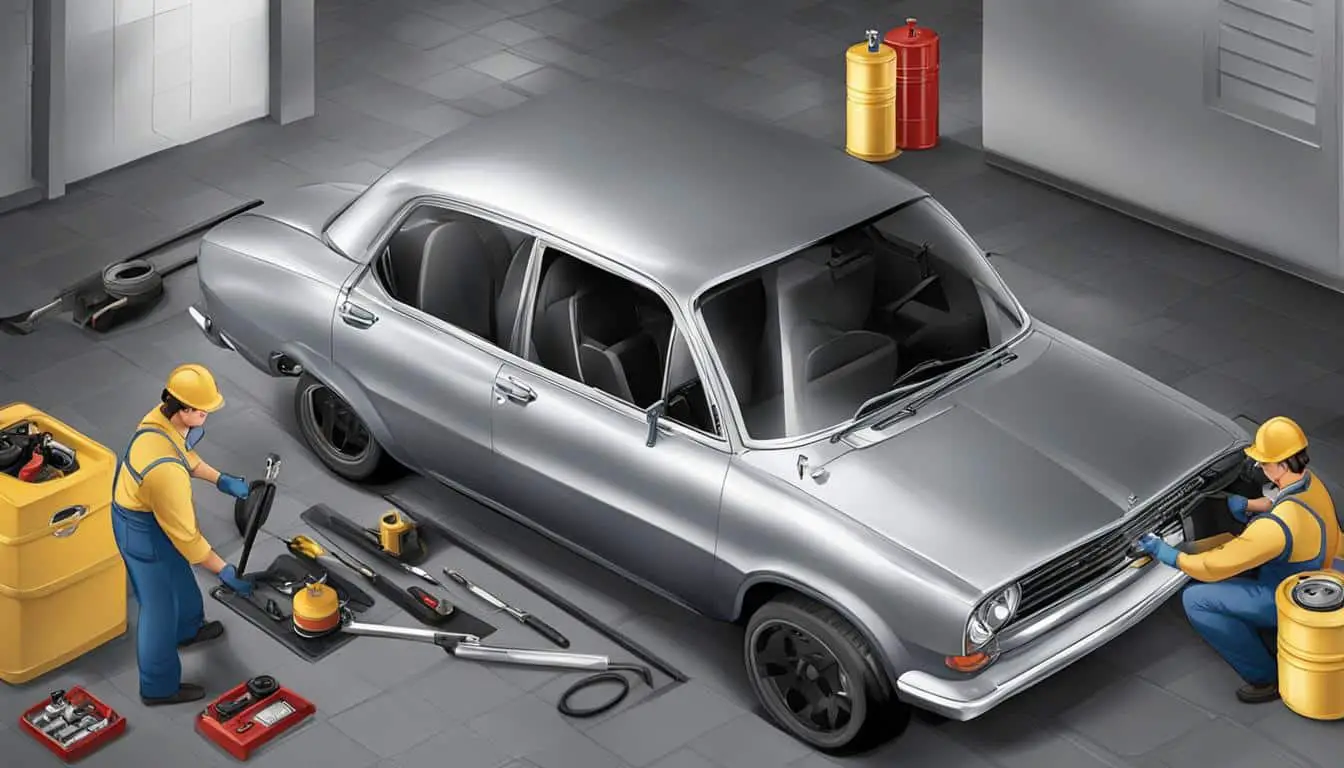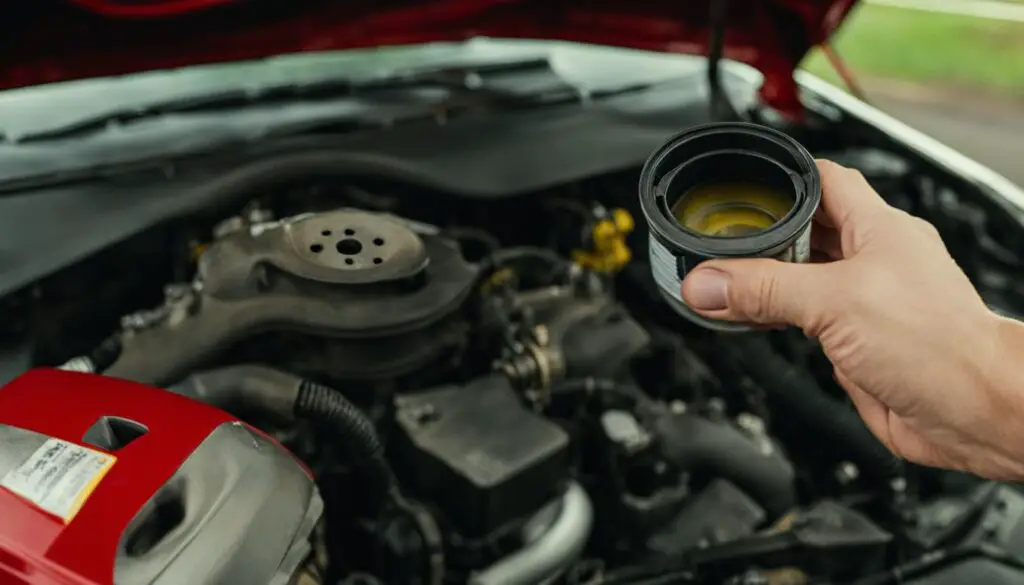
Step-by-Step Guide to Changing Your Oil
As a vehicle owner, one of the essential maintenance tasks you need to perform is changing your car’s oil. While taking your car to a mechanic can be an option, performing an oil change yourself can save you money and ensure that your vehicle runs smoothly. In this guide, I will provide a comprehensive step-by-step guide to changing your oil, from understanding the oil change process to completing the task successfully.
Key Takeaways:
- Regular oil changes are essential for the longevity and performance of your vehicle.
- Changing your oil yourself can save you money and ensure that the task is done correctly.
- Be sure to gather all the necessary tools and equipment before starting the oil change process.
- Follow the step-by-step instructions provided in this guide to complete the oil change successfully.
- Remember to dispose of the old oil responsibly and recycle the oil filter.
Understanding the Oil Change Process
Before diving into the step-by-step instructions, I want to make sure you have a clear understanding of the oil change process. Regular oil changes are essential for the maintenance of your vehicle. As the oil circulates through your engine, it picks up dirt and debris, causing it to break down over time. This can lead to engine damage, reduced fuel economy, and costly repairs.
Here is a complete guide to oil change, where I’ll explain the different types of oil and filters available, and the tools you’ll need for the job. Keep reading for a oil change tutorial.
Types of Oil and Filters
When it comes to oil, there are two main types: conventional and synthetic. Conventional oil is made from crude oil and is less expensive, while synthetic oil is chemically engineered to provide better performance and protection for your engine, but is more expensive. The type of filter you use depends on the make and model of your vehicle. There are two popular types of filters: cartridge filters and spin-on filters.
Tools Needed for an Oil Change
You don’t need to be a mechanic to change your oil, but you will need a few tools to get the job done. Here’s a list of the essential tools you’ll need:
| Tools | Function |
|---|---|
| Oil filter wrench | To remove the filter |
| Oil drain pan | To collect old oil |
| Funnel | To pour new oil into the engine |
| Jack and Jack stands | To lift the vehicle up safely |
| Ratchet and socket set | To remove the drain plug |

Now that we’ve covered the basics of the oil change process, it’s time to move on to the step-by-step instructions. In the next section, I’ll provide a step-by-step oil change instructions, including tips and a helpful checklist to ensure you complete the process with ease.
Step-by-Step Oil Change Instructions
Now that you have a clear understanding of the oil change process, it’s time to roll up your sleeves and get to work. Follow these step-by-step oil change instructions to keep your vehicle running at its best:
- Prep your vehicle: Before beginning an oil change, park your car on a level surface and let it cool down for a few minutes. Then, gather all the necessary tools and materials, including the correct type and amount of oil, an oil filter wrench, a drain pan, and gloves.
- Locate the drain plug and oil filter: Underneath your vehicle, you’ll find the drain plug and oil filter. Consult your owner’s manual for their exact location. Position the drain pan underneath the drain plug.
- Drain the old oil: With the drain pan in place, use the oil filter wrench to loosen the drain plug and let the old oil drain into the pan. Be careful as the oil may be hot. Once the oil has drained, remove the old oil filter.
- Replace the oil filter: Before installing the new oil filter, apply a small amount of new oil onto the gasket to ensure a proper seal. Then, screw on the new oil filter by hand until snug.
- Add new oil: Refer to your owner’s manual for the type and amount of oil needed for your vehicle. Slowly pour the new oil into the engine through the oil filler hole. Once done, replace the oil cap and run the engine for a minute.
- Check the oil level: After running the engine, turn it off and wait a minute for the oil to settle. Then, use the dipstick to check the oil level. Add more oil if needed, but don’t overfill.
That’s it! You have successfully completed your oil change. Keep in mind that these instructions are a general guide. Always consult your owner’s manual for specific instructions and safety precautions. Follow these DIY oil change tips and use our handy oil change checklist to ensure a smooth and successful oil change procedure.

Conclusion
In conclusion, changing your oil is an essential part of vehicle maintenance that can greatly extend the life and performance of your car. By following the step-by-step guide provided in this article, you can confidently tackle oil changes on your own, saving both time and money that would have otherwise been spent on professional services.
Remember to always follow the manufacturer’s recommendations for oil type and frequency of oil changes. Regular oil changes not only ensure the longevity of your vehicle but also help prevent costly repairs down the line.
Final Thoughts
While performing an oil change may seem daunting at first, with the proper understanding and tools, it can be a relatively simple process. With the guide provided in this article, I hope you feel confident and equipped to tackle your next oil change with ease.
Thank you for reading, and happy oil changing!
FAQ
Why is it important to change your oil regularly?
Regular oil changes are essential for maintaining the health of your vehicle’s engine. Fresh oil helps lubricate the engine’s moving parts, reducing friction and preventing wear and tear. It also helps to remove debris and contaminants, keeping the engine clean and running smoothly.
How often should I change my oil?
The frequency of oil changes depends on various factors, including the make and model of your vehicle and your driving habits. As a general guideline, most manufacturers recommend changing your oil every 3,000 to 5,000 miles or every 3 to 6 months. However, it’s always best to consult your vehicle’s owner’s manual for the manufacturer’s specific recommendations.
Can I change my own oil?
Yes, many vehicle owners choose to change their own oil to save time and money. However, it’s important to have the necessary tools and follow proper safety precautions. This step-by-step guide will provide you with all the information you need to successfully complete an oil change on your own.
What tools do I need to change my oil?
To change your oil, you’ll need a few basic tools, including a wrench to remove the drain plug, an oil filter wrench, an oil pan to catch the old oil, a funnel for adding new oil, and a rag or paper towels for cleaning up any spills. You’ll also need a new oil filter and the correct type and amount of oil for your vehicle. Refer to your vehicle’s owner’s manual for the specific oil and filter requirements.
How do I find the drain plug and oil filter on my vehicle?
The drain plug is typically located on the bottom of the engine oil pan. It may be accessible from the front, back, or side of the engine, depending on your vehicle’s design. The oil filter is usually located near the bottom of the engine, although it can vary depending on the make and model. Again, consult your vehicle’s owner’s manual for the exact locations.
What should I do with the used oil?
Used oil should never be disposed of in the trash or poured down the drain. It is considered hazardous waste and needs to be recycled. Many auto parts stores and service centers accept used oil for recycling. You can also check with your local recycling center or waste disposal facility for proper disposal methods.
